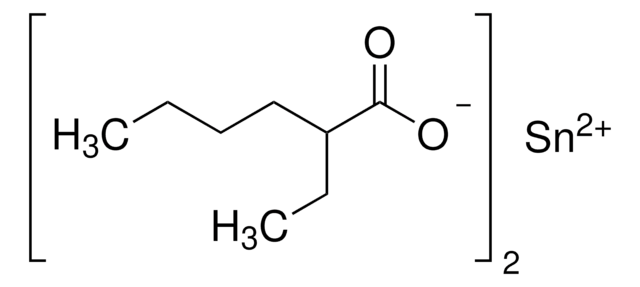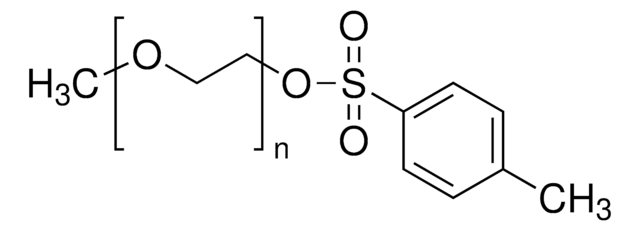202509
Poly(ethylene glycol) methyl ether
average Mn 2,000, methoxy, hydroxyl
Sinônimo(s):
Polyethylene glycol, Methoxy poly(ethylene glycol), Polyethylene glycol monomethyl ether, mPEG
About This Item
Produtos recomendados
product name
Poly(ethylene glycol) methyl ether, average Mn ~2,000
densidade de vapor
>1 (vs air)
Nível de qualidade
pressão de vapor
0.05 mmHg ( 20 °C)
forma
flakes (or pellets)
peso molecular
average Mn ~2,000
viscosidade
54.6 cSt(210 °F)(lit.)
temperatura de transição
Tm 52 °C
grupo funcional
hydroxyl
InChI
1S/C3H8O2/c1-5-3-2-4/h4H,2-3H2,1H3
chave InChI
XNWFRZJHXBZDAG-UHFFFAOYSA-N
Procurando produtos similares? Visita Guia de comparação de produtos
Categorias relacionadas
Descrição geral
Aplicação
It can be used as a pore-forming agent in the preparation of ultrafiltration membranes which are used in the removal of macromolecules.
It can also be used as a starting material in the preparation of a biodegradable amphiphilic copolymer of poly(L-alanine) with mPEG.
Características e benefícios
Código de classe de armazenamento
11 - Combustible Solids
Classe de risco de água (WGK)
WGK 1
Ponto de fulgor (°F)
359.6 °F - closed cup
Ponto de fulgor (°C)
182 °C - closed cup
Equipamento de proteção individual
Eyeshields, Gloves
Escolha uma das versões mais recentes:
Já possui este produto?
Encontre a documentação dos produtos que você adquiriu recentemente na biblioteca de documentos.
Os clientes também visualizaram
Artigos
Fouling Resistant Biomimetic Poly(Ethylene Glycol) Based Grafted Polymer Coatings
Nossa equipe de cientistas tem experiência em todas as áreas de pesquisa, incluindo Life Sciences, ciência de materiais, síntese química, cromatografia, química analítica e muitas outras.
Entre em contato com a assistência técnica





